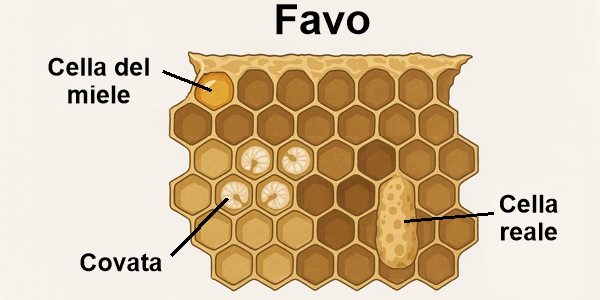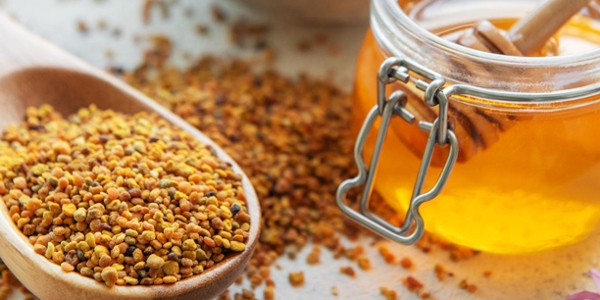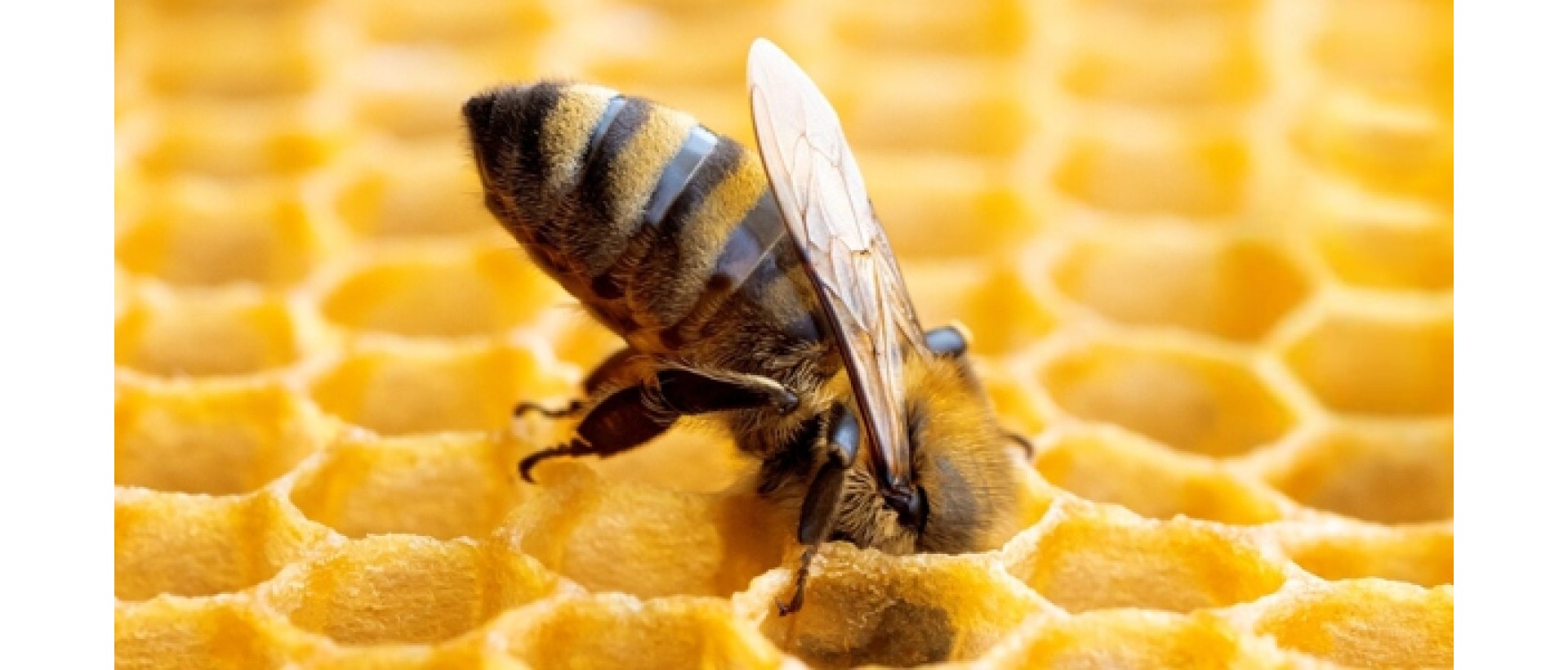Il miele in pasticceria, le frodi ed il mondo delle api
Nei giorni scorsi ad Abano Terme (PD) si è svolta una manifestazione didattica riguardante l’importanza delle api per la sostenibilità agricola ed i frutti del loro prezioso lavoro.
Per noi, che abitiamo in Veneto, è stata una interessante occasione per capire ed approfondire questo affascinante mondo delle api.
Prima di tutto vorremmo però riportare in auge una notizia di un paio di mesi fa riguardante un’operazione della Guardia di Finanza di Vicenza, in collaborazione con l'Ispettorato Centrale della Tutela della Qualità e Repressione Frodi dei prodotti agroalimentari (ICQRF), che ha portato al sequestro di oltre 22 mila chili di miele adulterato o contraffatto proveniente da diversi Stati europei ed extraeuropei, tra cui Romania, Ungheria, Turchia, Cina e Vietnam.
Sono stati sequestrati 74 fusti di miele da 300 chili cadauno!
La notizia è stata riportata da alcuni giornali locali ma si può leggere anche sul sito web della Coldiretti alla seguente pagina: https://www.coldiretti.it/consumi/made-in-italy-bene-sequestro-miele-straniero-nel-2024-invasione-di-prodotto-estero-16
Questa notizia fa il paio con un’altra a noi nota di molto tempo fa: era il 2005 e fu rinvenuto in Germania e Italia della pappa reale e del miele cinese contaminati al cloranfenicolo (vedi: https://unaapi.it/notizie-apicoltura/pappa-reale-e-miele-cinese-al-cloranfenicolo-3183/)
Sono 75.000 gli apicoltori italiani e Coldiretti oltre a lanciare l’allarme sulle frodi alimentari avverte l’importanza di leggere attentamente l’etichetta e preferire l’acquisto diretto da produttori locali. Ricordiamo che una nuova Direttiva Europea denominata “Breakfast” (n. 1438/2024/UE) ha introdotto infatti l’obbligo in etichetta di riportare in modo chiaro e ben visibile il Paese di origine. Questa direttiva non riguarda solo il miele ma anche i succhi di frutta, le confetture ed il latte disidratato (vedi alla seguente pagina: https://www.consilium.europa.eu/it/press/press-releases/2024/04/29/council-adopts-revised-breakfast-directives-to-strengthen-marketing-standards-and-improve-consumer-information/).
È tuttavia semplicistico credere che l'indicazione del Paese di origine possa, da sola, prevenire le frodi legate al miele. Il recente sequestro dimostra infatti che esistono importatori privi di scrupoli, disposti a commercializzare miele adulterato. Nulla impedisce, purtroppo, che questo prodotto venga successivamente rivenduto come “made in Italy”, falsificando l’origine e ingannando così il consumatore.
In Italia il consumo pro-capite è di circa 500 grammi l’anno, inferiore alla media europea, ma il Paese si distingue per la sua ricca biodiversità, con oltre 60 varietà di miele, incluse produzioni Dop e specialità aromatizzate.
Parliamo ora un po’ delle api e del loro incessante lavoro.
Le api: piccole, ma fondamentali
Le api sono insetti sociali che vivono in colonie organizzate. Ogni colonia ha:
- Una regina, che depone le uova.
- Le operaie, che fanno praticamente tutto: nutrono le larve, puliscono l’alveare, raccolgono nettare e polline…
- I fuchi, i maschi, il cui unico scopo è accoppiarsi con la regina.
Ma la vera magia delle api è il loro ruolo di impollinatrici: grazie al loro volo di fiore in fiore, permettono a tantissime piante di riprodursi. Perché è così importante?
- Circa il 75% delle colture alimentari (mele, mandorle, zucchine, fragole, ciliegie, ecc.) dipendono da impollinatori come le api.
- L’impollinazione aumenta quantità, qualità e varietà dei raccolti.
- Senza api, molti alimenti sarebbero più rari, più costosi o addirittura assenti dalle nostre tavole.
E non si tratta solo di cibo per noi: molte piante spontanee e selvatiche (che mantengono gli ecosistemi) dipendono dall’impollinazione per continuare a esistere.
Cosa succede se le api sparissero?
Gli scienziati parlano di un “collasso degli impollinatori” come uno dei rischi più seri per la sicurezza alimentare globale. Se le api sparissero:
- Le rese agricole crollerebbero.
- Le diete si impoverirebbero (meno frutta e verdura).
- Gli ecosistemi perderebbero biodiversità.
Che cos’è l’impollinazione?
È il trasferimento del polline (che contiene le cellule riproduttive maschili) dalle antere (parte maschile del fiore) al pistillo (parte femminile). Quando questo avviene con successo, la pianta può generare frutti e semi.
Il ruolo delle api nell’impollinazione
Le api visitano i fiori per raccogliere nettare (da trasformare in miele) e polline (una fonte proteica per le larve). Mentre si muovono da un fiore all’altro:
- Il loro corpo peloso si riempie di granelli di polline.
- Involontariamente, quando visitano un altro fiore, depositano parte del polline, facilitando l’impollinazione.
Quindi, le api sono degli impollinatori naturali eccezionali, perché:
- Visitano tantissimi fiori ogni giorno.
- Si muovono con metodo e precisione.
- Hanno una fedeltà floreale: tendono a visitare la stessa specie di pianta finché ce n’è disponibilità, migliorando l’efficacia dell’impollinazione.
Oltre all’impollinazione le api ci donano:
- il Miele
- la Cera
- la Propoli
Il miele: oro liquido della natura
Il miele è utilizzato per il suo potere dolcificante in sostituzione del saccarosio (zucchero) o di altri polissacaridi.
Il miele, grazie alla presenza di fruttosio e glucosio, ha un maggiore potere dolcificante rispetto allo zucchero ed un livello calorico inferiore dato che contiene circa il 20% di acqua. Un’altra differenza importante è la presenza nel miele di vitamine, flavonoidi e sali minerali.
In più il miele ha un sapore più ricco e aromatico dello zucchero, con note floreali, fruttate, balsamiche… a seconda della varietà di fiori (acacia, castagno, agrumi, millefiori, ecc.) da cui le api traggono il nettare.
In pasticceria è d’altronde usato in tantissime specialità che si contraddistinguono proprio per la presenza del miele, citiamo ad esempio gli Struffoli (Campania), le Cartellate (Puglia), i Cavallucci e Ricciarelli (Toscana), i Mostaccioli (varie regioni), il Torrone (Lombardia, Veneto), i Zelten (Trentino-Alto Adige).
Il miele è il risultato del lavoro instancabile delle api. Ecco come lo producono:
- Raccolta del nettare: le api lo succhiano dai fiori e lo immagazzinano in un “serbatoio” chiamato borsa melaria.
- Trasformazione enzimatica: una volta tornate all’alveare, rigurgitano il nettare e lo passano da un’ape all’altra, arricchendolo di enzimi.
- Evaporazione dell’acqua: il nettare viene depositato nelle celle dell’alveare e ventilato dalle api finché l’acqua non si riduce abbastanza.
- Chiusura con cera: quando il miele è pronto, le api sigillano le celle con un opercolo di cera.
Ogni singola ape in tutta la sua vita produce da mezzo cucchiaino a un cucchiaino di miele.
La produzione di miele è un lavoro di squadra ed ogni ape e comunica con le altre danzando in una specie di “danza dell’addome” che spiega alle compagne dove trovare il cibo!
Si calcola che per produrre 1 Kg di miele le api nel loro insieme percorrano una distanza enorme, qualcosa come 540.000 Km!
Ma tutto questo lavoro oggigiorno è minacciato dai pesticidi, dalla perdita di habitat, dai cambiamenti climatici oltreché dai parassiti.
Cos'è la cera d’api?
Noi conosciamo la cera quale materia prima per la produzione delle candele! Ma i suoi usi sono molteplici: nei cosmetici (creme, balsami labbra, unguenti) perché ha proprietà emollienti, protettive e idratanti, negli alimenti (rivestimento naturale ad es. nei formaggi o per realizzare fogli di carta cerata riutilizzabili), nei farmaci e rimedi naturali grazie alle sue proprietà antibatteriche e antinfiammatorie.
La cera è una sostanza secreta dalle api operaie giovani, in particolare tra il 12° e il 18° giorno di vita. Le api la producono da ghiandole ceripare situate sull’addome.
- La cera esce in piccole scaglie trasparenti, che poi vengono masticate e modellate dalle api per costruire il favo.
- Appena prodotta è quasi bianca, poi assume un colore più giallo o ambrato a seconda del contatto con il polline, il propoli e il miele.
La cera è fondamentale per:
- Costruire i favi: un insieme di perfette celle esagonali dove vengono allevate le larve (dall’uovo alla larva e poi dalla pupa fino all’ape adulta) e conservati miele e polline. A ben veder, queste celle esagonali sono una meraviglia della natura: hanno una forma efficiente per occupare meno spazio e immagazzinare sostanze con il minimo uso di materiale.
- Sigillare il miele maturo: la cella è tappata con un sottile tappo di cera, che protegge il miele dall'umidità e dall’aria.
- Isolare e proteggere: la cera è un termoisolante e contribuisce a mantenere la temperatura ideale nell’alveare (circa 34-35 °C).
Si pensi che per produrre 1 kg di cera sono necessari 8-10 kg di miele! È un prodotto davvero prezioso.
Qualche dato curioso sul favo!
Non confondiamo il favo con l’alveare che è la casa completa delle api ovvero l’intera struttura che contiene il favo (che è la struttura interna dell'alveare) e può essere naturale come ad esempio una cavità in un albero o in un muro, dove le api costruiscono i favi oppure può essere artificiale come quella usata dagli apicoltori (arnia), spesso fatta di legno, con telaini mobili dove le api costruiscono i favi.
Il favo è un insieme di celle esagonali costruito in cera dalla api con lo scopo, l’abbiamo già detto, di deporre le uova ed allevare le larve, e di conservare il miele e il polline.
- Un favo può contenere migliaia di celle perfettamente allineate.
- 1 grammo di cera può dare origine a oltre 800 cellette!
- È composto da due strati di cellette esagonali, disposte schiena contro schiena, cioè speculari, con un sottile foglio di cera al centro.
- Ogni celletta ha la forma esagonale regolare, perfettamente simmetrica, inclinata leggermente verso l’alto per evitare la fuoriuscita del contenuto. La loro forma permette di occupare tutto lo spazio senza lasciare vuoti e garantisce una ottima resistenza meccanica.
- Le pareti tra le celle sono sottilissime (0,07 mm circa), ma la struttura d’insieme è fortissima.
- Sono le api operaie giovani che, guidate da istinto e segnali chimici, lavorano in perfetta armonia: prima producono la cera, poi masticano le scaglie cerose fino a renderle morbide, modellano le cellette con movimenti precisi delle mandibole e delle zampe ed infine costruiscono le cellette in un lavoro gruppo, a partire dall’alto verso il basso.
- Tra tutte le celle c’è né una di particolare, è la cella reale che ospita l’ape regina. I lati dell’esagono non sono regolari poiché ha una forma allungata e verticale, simile a una piccola arachide. Oltre ad essere diversa essa sporge visibilmente dal favo. La cella reale viene costruita solo quando serve allevare una nuova regina (per sostituire quella vecchia, morta o in caso di sciamatura).

La propoli
La propoli è una resina vegetale che le api raccolgono da gemme e cortecce di piante come pioppi, betulle, conifere, castagni, olmi... La arricchiscono con enzimi, cera e polline, trasformandola in una sostanza densa, appiccicosa e profumatissima. Il suo colore va dal giallo-verde al marrone scuro, a seconda delle piante da cui proviene.
Il nome propoli viene dal greco: “pro” che significa “davanti” e “polis” termine noto a molti che vuol dire “città”, cioè "davanti alla città", come a dire “a protezione dell’alveare”.
La propoli in effetti è prodotta ed utilizzata dalle api per sigillare eventuali fessure dell’alveare così da renderlo ermetico, proteggendolo da attacchi di parassiti ed altri insetti e sterilizzandone l’ambiente interno, creando una barriera antimicrobica. È risaputo infatti che la propoli ha una importante proprietà antibatterica.
Per questo stesso motivo, la propoli viene utilizzata dalle api per mummificare gli intrusi (tipo insetti morti, troppo grandi da rimuovere) ed evitare così infezioni che potrebbero propagarsi all’interno dell’alveare.
Proprietà della propoli per l’uomo
Abbiamo già detto delle proprietà antibiotiche. Per questo motivo la propoli è stata usata fin dall’antichità (dagli Egizi, dai Greci, dai Romani...) per le sue proprietà antibatteriche. Inoltre ha altre proprietà:
- Antivirale
- Antimicotica
- Antinfiammatoria
- Anestetica locale
La si trova in tantissime forme:
- Tintura madre (gocce in alcol o acqua)
- Spray per gola e naso
- Caramelle e compresse
- Pomate e creme per la pelle
- Collutori e dentifrici
- Anche in unguenti cicatrizzanti e prodotti per la cura di afte e gengiviti
È molto usata per:
- Raffreddori, mal di gola, tosse
- Tagli, ferite, acne, herpes
- Rinforzare il sistema immunitario, specialmente in inverno
Un'ultima curiosità
Il 20 maggio è la giornata mondiale delle api. La data è stata scelta dall'Assemblea generale delle Nazioni Unite perché coincide con la data di nascita di Anton Janša (1734-1773, foto a sinistra), il quale nel XVIII secolo fu un pioniere delle tecniche di apicoltura moderne nel suo Paese natale, la Slovenia.

Foto: Propoli e Miele

